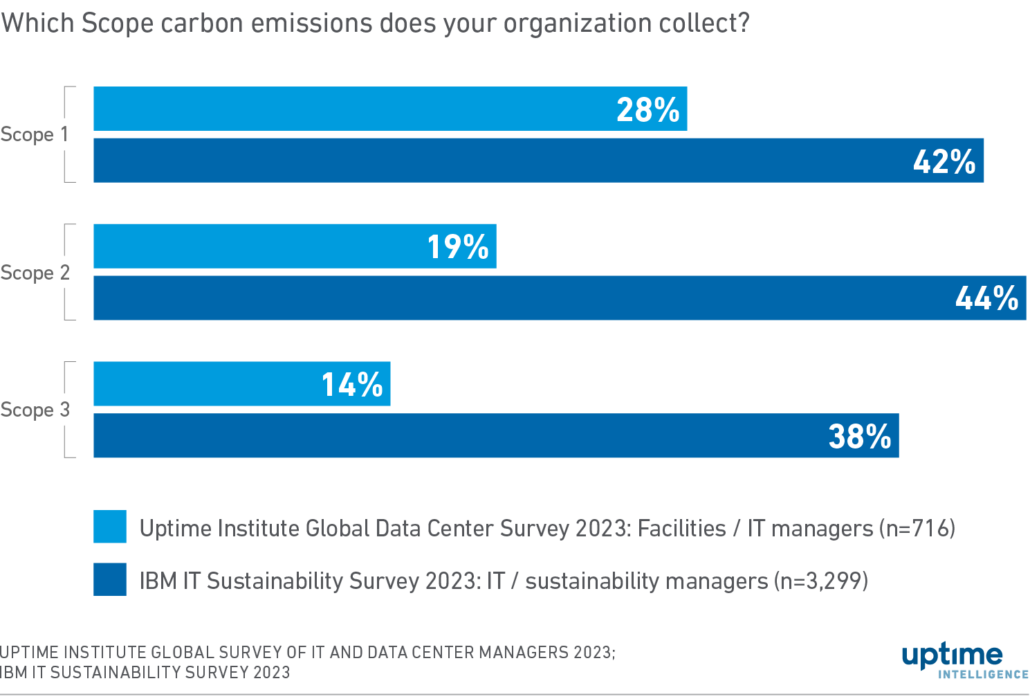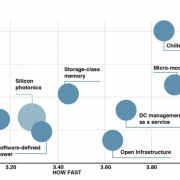When net-zero goals meet harsh realities
For more than a decade, the data center industry — and the wider digital infrastructure that relies on it — has lived with the threat of much greater sustainability legislation or other forms of mandatory or semi-mandatory controls. But in a period of boom, it has mostly been a background worry, with legislators more concerned about disrupting an important new industry.
The EU, for example, first introduced the voluntary Code of Conduct for data centers in 2008, warning that legislation would follow if carbon and energy footprints were not brought under control. In the UK, a carbon reduction commitment was required of data centers but was later withdrawn.
Some countries and states, including California, Amsterdam and Singapore, have introduced tighter planning restrictions for data centers and even moratoriums on new developments. However, some of these have been watered down or suspended.
Since 2018, Uptime Institute has repeatedly warned of the likelihood of more legislation and greater public pressure, advising operators to, at the very least, avoid over-ambitious statements, collect better data and prepare. But the pressure to do so has not been strong: improvements in energy efficiency and processors’ performance (Moore’s law), along with the greater use of cloud computing, have held down energy and carbon use, while facility efficiency has gradually improved.
This “green honeymoon” is, however, coming to an end and for some, this will be both painful and expensive. From 2024, new reporting laws and a toughening of requirements will enforce stricter carbon reporting in many countries. These will attempt to ensure that corporate promises are both realistic and evidence-based (see the end of the report for details), and their effects will not be confined to countries or states where there is primary legislation.
A difficult period ahead
Meeting these tougher public goals will not be easy. For several different reasons, which span software and processor developments to the availability of renewable energy in the power grid, the ability of organizations using digital infrastructure to contain or reduce their energy use and carbon emissions will become more difficult.
Ultimately, these pressures may combine to encourage the widespread adoption of more aggressive and thoughtful sustainability strategies as well as a period of progressive and effective investment.
But Uptime Intelligence is also forecasting a difficult period for the sector from 2024 to 2030, as organizations miss sustainability goals and reporting requirements, battle with regulators and even some partners, and struggle to align their corporate business goals with wider sustainability objectives.
For example, in August, the UN-backed Science Based Targets initiative (SBTi) removed Amazon’s operations (including AWS) from its list of committed companies, as Amazon had failed to validate its net-zero emissions target to the SBTi criteria for science-based targets.
This is part of a wider trend. The CDP, previously known as the Carbon Disclosure Project and the most comprehensive global registry of corporate carbon emission commitments, recently said that of the 19,000 companies with registered plans on its platform, only 81 were credible.
A clear disconnect
In the coming years, larger and listed companies in most major economies will have to report their carbon emissions and climate-related risks, sometimes under financial reporting law and sometimes through special directives — the EU’s Corporate Sustainability Reporting Directive (CRSD) and California’s Climate Corporate Data Accountability Act (passed in September 2023) are two examples. The US Securities and Exchange Commission will also eventually require some emissions and risk disclosure from listed companies.
In some jurisdictions, the reporting and improvement of energy use will be required. The latest recast of the EU’s Energy Efficiency Directive (EED), finally published in October 2023, has detailed reporting requirements for data centers that include IT and network equipment use. The German implementation of the EED goes a step further, setting down PUE levels and requirements to reuse heat (with some exceptions). It also requires separate reporting by owners and operators of IT in colocation data centers.
There is a move towards greater precision and accountability at the non-governmental level, too. The principles of carbon emission measurement and reporting that underpin, for example, all corporate net-zero objectives tend to be agreed upon internationally by institutions such as the World Resources Institute and the World Business Council for Sustainable Development; in turn, these are used by bodies such as the SBTi and the CDP. Here too, standards are being rewritten, so that, for example, the use of carbon offsets is becoming less acceptable, forcing operators to buy carbon-free energy directly.
With all these developments under way, there is a startling disconnect between many of the public commitments by countries and companies, and what most digital infrastructure organizations are currently doing or are able to do. Figure 1 below shows that, according to two big surveys from Uptime Institute and IBM, far less than half of managers polled in IT (digital infrastructure) organizations say they are currently tracking any kind of carbon emission data (fuel, purchased electricity, and purchased goods and services).
Figure 1. Digital infrastructure’s tracking of carbon emissions

The difference between the two surveys highlights a second disconnect. IBM’s findings, based on responses from senior IT and sustainability staff, show a much higher proportion of organizations collecting carbon emission data than Uptime’s. However, the Uptime group is more likely to be directly responsible for electricity bills and associated carbon emissions, as well as generator fuel use, and is therefore more likely to have the tools and knowledge to collect the data.
One explanation for this is that sustainability and senior IT staff may not always collect all the underlying data but may use higher-level models and estimates. While this may be legally acceptable, it will not provide the data to identify waste and make the critical, detailed improvements necessary to reduce the digital carbon footprint.
In interviews with enterprises and colocation companies, Uptime similarly found that most of those concerned with reducing energy consumption or collecting sustainability data have limited contact with sustainability or executive teams.
Further challenges
Accurate, timely reporting of carbon emissions and other data will be difficult enough for many digital infrastructure operators, especially as it extends to Scope 3 (embedded, third-party and supply chain emissions). But operators will ultimately face a challenge that will not only be more difficult but may require significant investment: reducing emissions, whether in absolute terms or relative to the overall business workload.
Reducing emissions has never been easy, so why may it become more difficult? The first set of problems relates to IT. In the past five years, Moore’s law-type improvements in processor performance have slowed, supplemented or replaced multi-core processors and GPUs. These are doing more work but also require more power, which pushes up the power and cooling requirements both at a server level and in aggregate across data centers. Significantly improved cooling (e.g., direct liquid cooling), better utilization of IT and better, more intelligent management of workloads will be required to prevent runaway power consumption and carbon emissions.
A second set of problems relates to the energy grid. In most regions, it will take decades before grids are able to operate carbon-free most or all the time. But carbon reporting standards will increasingly require the use of in-region, carbon-free energy (or renewable energy). As more data center operators seek to buy carbon-free energy to meet net-zero goals, this renewable energy will rise in price — if it is available at all. Purchasing enough carbon-free energy to match all demand (24×7) will, at best, be expensive and, at worst, impossible.
The third problem is the continuing explosion in workload growth. Energy use by data centers is currently estimated to be between 150 terawatt-hours (TWh) and 400 TWh a year. And even without generative AI, it is universally expected to increase significantly, with some predictions expecting this to double or more beyond 2030 as workloads increase. With generative AI — the overall impact of which is as yet not fully understood — energy use could skyrocket, straining power grids and supply chains, and rendering carbon emission targets yet more difficult to meet.
The Uptime Intelligence View
This analysis suggests that, for most operators of digital infrastructure, it will not only be very difficult to meet stated carbon emission targets, but new reporting requirements will mean that many will be seen to fail. This may be expensive and incur reputational damage. Managers should work closely with all appropriate functional departments and partners to develop a strategy based on realistic goals and real data. No one should announce public goals without first doing this work.




 Uptime Institute
Uptime Institute





